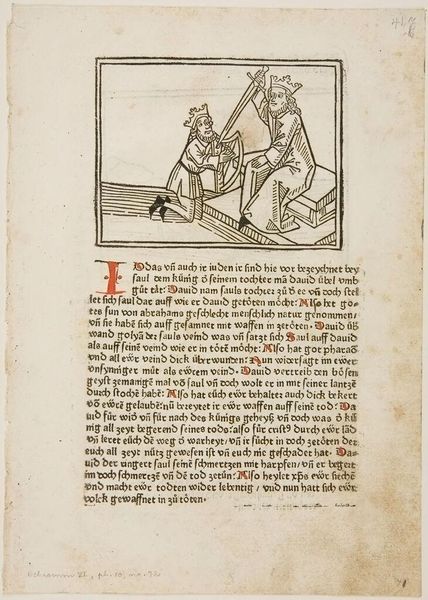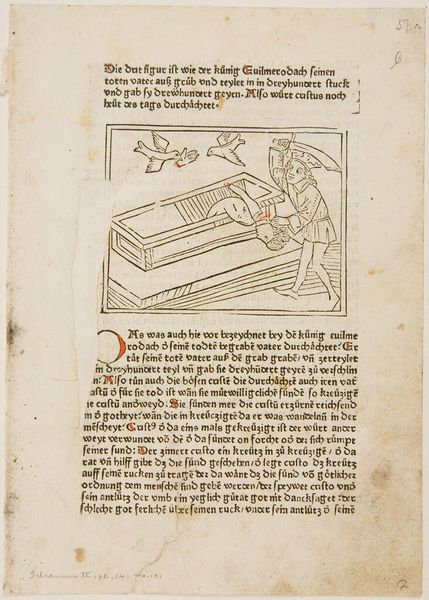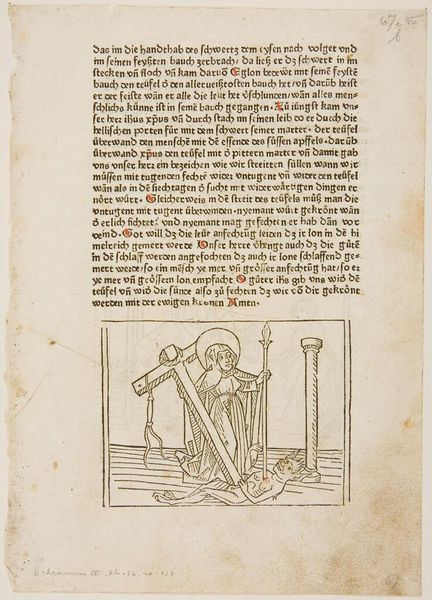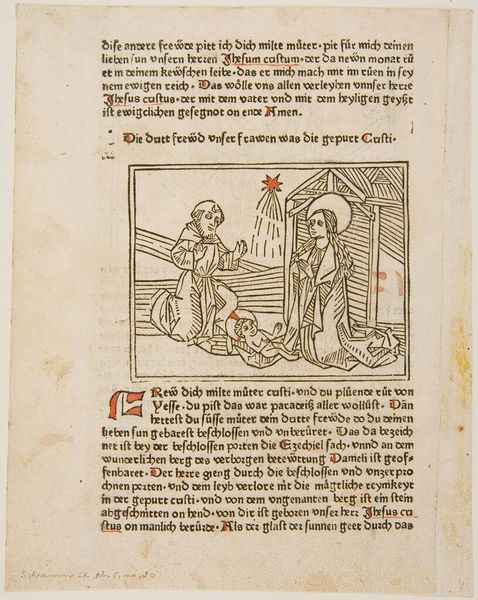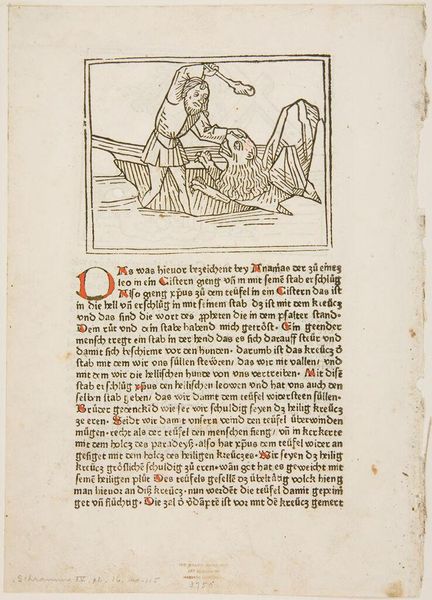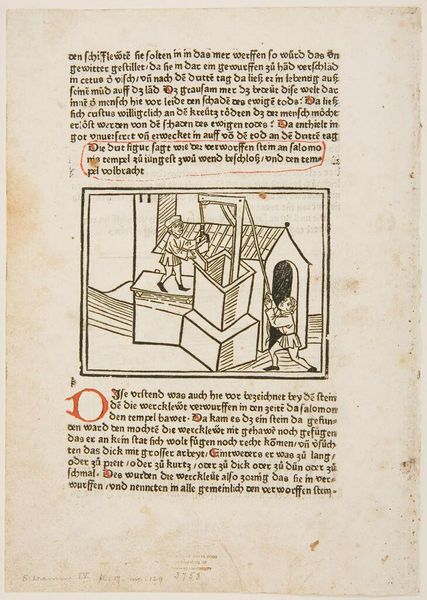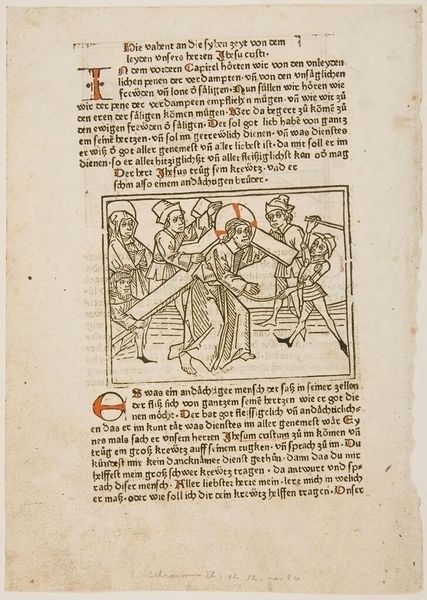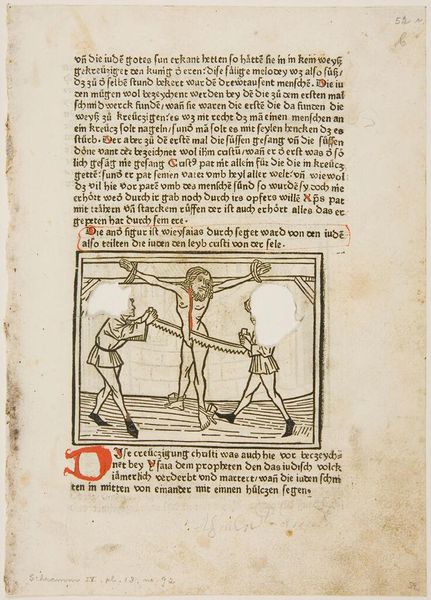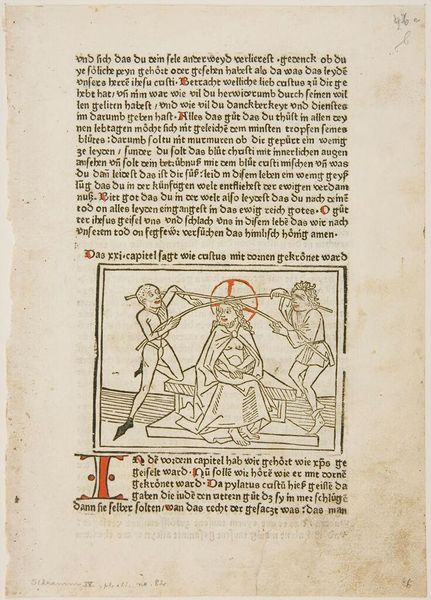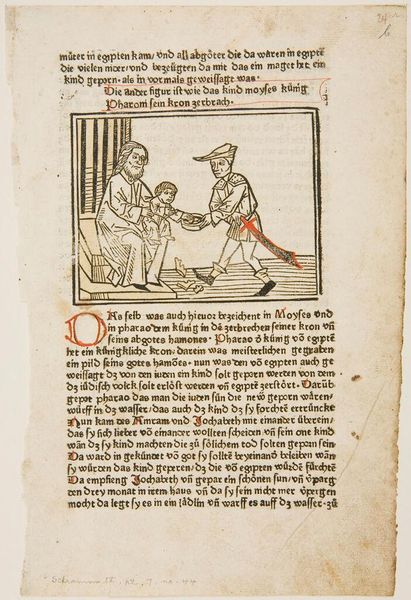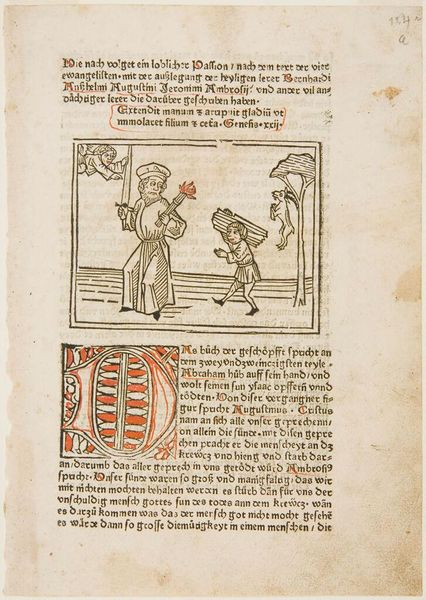
David Weeps over Abner's Death; verso: Joseph Thrown in the Pit by his Brothers c. 15th century
0:00
0:00
Copyright: CC0 1.0
Curator: Here we have an intriguing page featuring "David Weeps over Abner's Death," coupled on the verso with "Joseph Thrown in the Pit by his Brothers." It's an anonymous piece, residing at the Harvard Art Museums, offering a raw, emotionally charged scene. Editor: My first impression is one of stark grief. The angular lines and the subject’s raised hands speak to a very performative, public display of sorrow. I am wondering about how this work negotiates power, mourning, and political strategy. Curator: Exactly. The depiction of David’s mourning isn’t just personal; it's a carefully constructed image of leadership. How does this intersect with the narrative of Joseph's betrayal on the reverse? Editor: It highlights themes of betrayal and loss, yes, but also the manipulation of grief for political ends. Who is this David serving? How does performative grief serve to reinforce existing power structures? Curator: By framing David's reaction, the artwork subtly interrogates the nature of leadership, presenting it as a performance embedded within a broader socio-political landscape. Editor: It forces us to consider how such displays of emotion are used and interpreted across different historical and cultural contexts, even today. I'm left wondering about the intended audience and the artist's own position within these power dynamics.
Comments
No comments
Be the first to comment and join the conversation on the ultimate creative platform.
